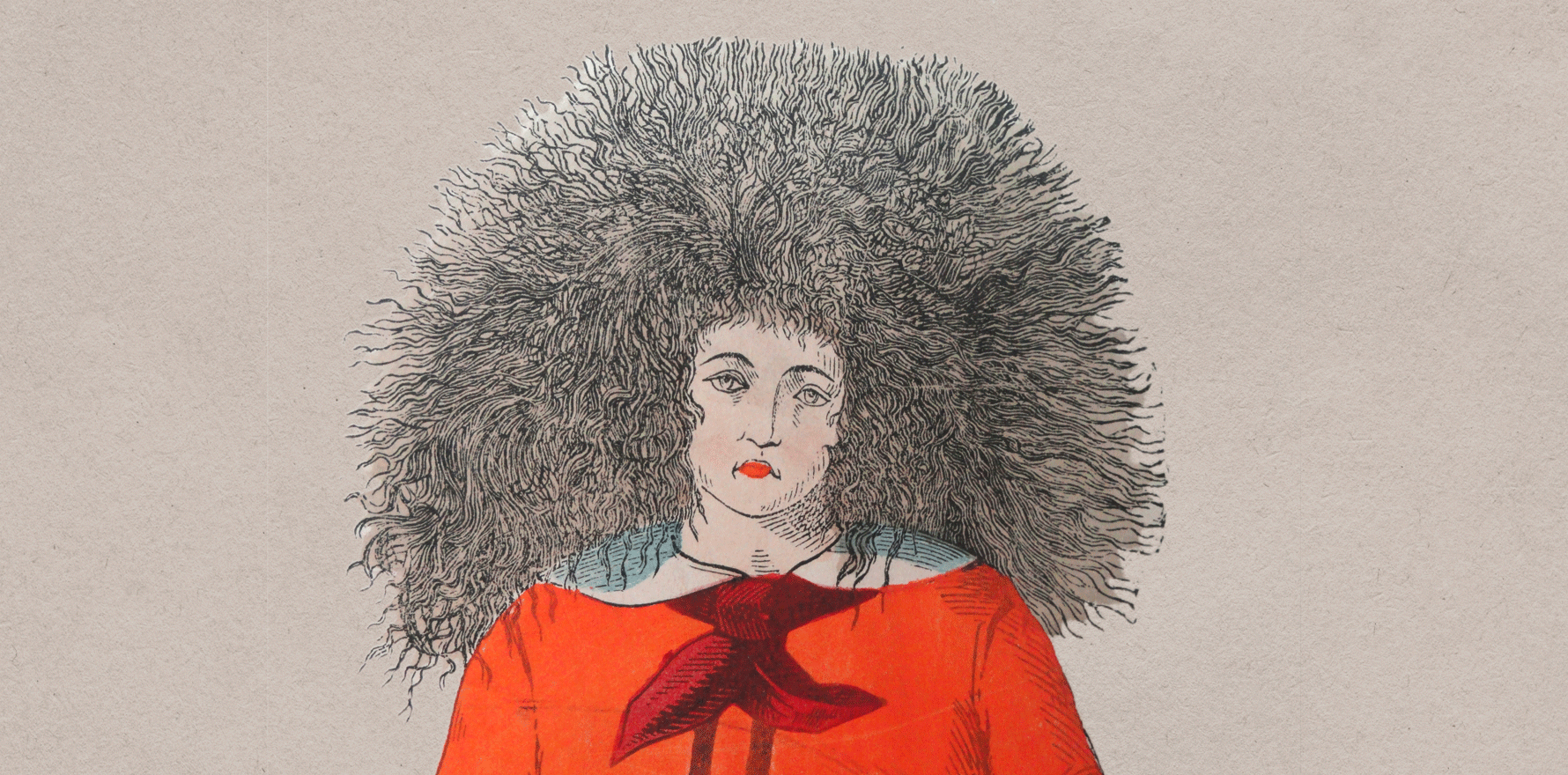
The genetic variant may have started in one individual hundreds of years ago, researchers say.
An extremely rare genetic hair syndrome caused by a recessive gene may have originated from a single common ancestor, a new study has found.
Uncombable hair syndrome is characterised by dry, frizzy, wiry, silvery blond hair that grows slowly and stands straight up from the scalp, resisting all attempts to be combed flat.
There are only around 100 recorded cases of the syndrome, which is a rare genetic disorder of the hair shaft.
Now a new study in JAMA Dermatology has found that 99% of uncombable hair syndrome cases are caused by two variants in the PADI3 gene.
Senior author Professor Regina Betz told Dermatology Republic it was possible that most people with the syndrome may be descended from the one individual with this genetic variation.
“There is more than one mutation, and you always need two, same or different, mutations to have uncombable hair syndrome,” said Professor Betz, professor of dermatogenetics at the University Hospital of Bonn.
“But in general, if you have for example the most common homozygous, or same, PADI3 mutation on each gene copy, it should come from the same ancestor, which might be hundreds of years back.”
Professor Betz said if a doctor or parent suspected that a child had uncombable hair, they should send them to a geneticist, if possible, or to a dermatologist.
“It is a visual diagnosis and can be confirmed by electron microscopy. However, genetics is 100% accurate, and a recurrence risk can be given.”
The researchers genetically tested saliva and blood samples of 89 patients and also included previous results from 18 participants in their earlier 2016 study. Among that group, 69 carried pathogenic variants.
The researchers then used three-dimensional protein modelling to examine the effect of the genetic variants on hair protein structure.
They found that among the 69 people with pathogenic variants, 67 carried recurrent or novel variants in PADI3.
Two people carried pathogenic variants in either TGM3 or TCHH, found the study, led by Professor Betz and first author Dr Buket Basmanav. PADI3, TGM3 and TCHH genes play a role in the formation of the hair shaft.
“In the majority of the present cohort, uncombable hair syndrome was associated with pathogenic variants in the gene PADI3, including 2 recurrent variants that were detected in around 99% of all PADI3 variant carriers,” the authors wrote.
Their analysis concluded that “the four most commonly observed pathogenic PADI3 variants are far more likely to have descended from a respective common ancestor rather than having had occurred independently multiple times.”
The spectrum of PADI3 associated with the syndrome was expanded to 12 pathogenic variants identified in individuals from 20 countries, they wrote.
Professor Betz told Dermatology Republic that many of the study participants were happy when genetic testing showed that they had the genetic variant for uncombable hair syndrome.
“They were often bullied in childhood and were worried about not belonging to their family or just about their strange hair. But now they know, it’s genetic and they feel special,” she said.
“We also made a meeting with about 15 families in Germany some years ago, and they were happy to meet others with uncombable hair syndrome.”
Professor Betz said it was not known why the condition sometimes resolved in adulthood.
“It could be because the hair follicle is growing, or hormones or other proteins are compensating, but these are all hypotheses,” she said.
Uncombable hair syndrome only affects the hair on the scalp but not the body. It can appear from infancy up to age 12 years but often gets better or resolves once puberty starts, becoming undetectable by adulthood.
“Nevertheless, uncombable hair syndrome often leaves a lasting imprint on the childhood years of the affected owing to pejorative responses to their unusual appearance,” the authors wrote.
People with uncombable hair syndrome have been reported to also have ectodermal dysplasias, retinitis pigmentosa, juvenile cataract and polydactyly, the authors wrote.
There is no treatment for the syndrome, but oral biotin supplements may help, according to some studies.
Professor Betz’s team published a molecular study into uncombable hair syndrome in 2016.
Since the publication of that study, they were contacted by a large number of clinicians and members of the public from around the world, they said. Those unrelated patients were included in the current study, including some parents and children from the same families.
In the latest study the researchers also discovered eight novel pathogenic variants in PADI3.
“Therefore, we anticipate that other very rare pathogenic variants in PADI3 exist and that these are likely to be discovered in the future,” they wrote.
However, in three of the families, there were pathogenic variations in genes underlying the rare dermatological disorder, hypotrichosis simplex with woolly hair.
“This suggests that the woolly hair phenotype (with or without hypotrichosis) may be mistaken for UHS by clinicians or affected individuals and, therefore, we suggest that woolly hair should be considered in the differential diagnosis of UHS,” the authors wrote
The syndrome is also sometimes known as Struwwelpeter syndrome, after the character with unruly hair from the 1845 cautionary children’s tale Der Struwwelpeter, written by German doctor Heinrich Hoffmann.

